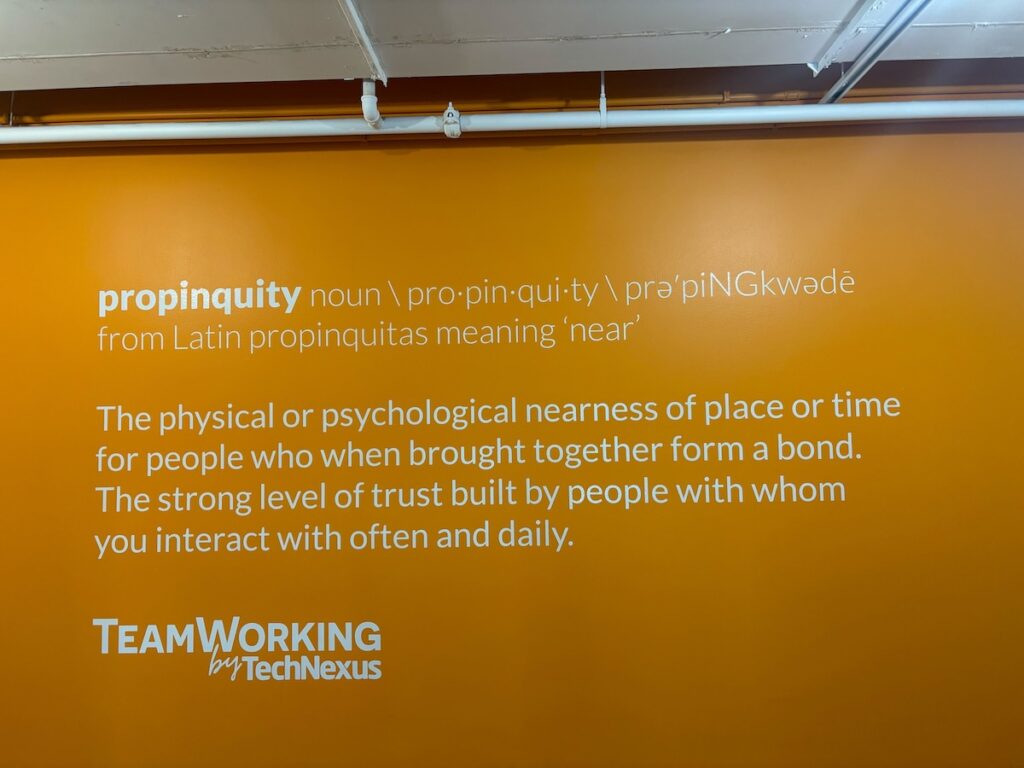In this series, TechNexus outlines ways corporations can stay innovative, defend against disruption, and better connect with startups.

At TechNexus, we talk a lot about building ecosystems. In fact, TechNexus originally began to create an ecosystem, or rather a support system for early stage technology founders that wanted to connect to others going through the same process. Now, we specialize in creating technology ecosystems around our corporate partners, leading Fortune 500 companies that want to invest in and collaborate with early stage startups. We believe that all corporations should build an innovation ecosystem.
What is an ecosystem?
Humor me for a minute, and think back to your high school science class. Your biology teacher likely spent an entire class talking about ecosystems, describing them as a complex network of living organisms interacting with each other and their environment. A healthy ecosystem can be described as “balanced,” where energy and nutrients flow, and various species contribute to the stability and growth of the ecosystem.
Similarly, in the tech world, an ecosystem refers to a network of interconnected organizations, individuals, and resources that work together to foster innovation and growth. The strongest ecosystems will contain a diverse set of backgrounds, perspectives, and expertise, all aligned on a common theme. For example, TechNexus partners with Thor Industries, the leading manufacturer of recreational vehicles. Through this partnership, we have spent the last few years building an innovation ecosystem around Thor, focusing on mobility, electrification, and outdoor recreation. Investments in companies like Harbinger, Lightship, Haven Energy, AmpUp, and BlueDot contribute to the balance in this ecosystem.
Why build a tech ecosystem?
Each year, TechNexus hosts a week of “Power Sessions” with our corporate partners, where we gather top corporate executives and the C-Suite of relevant startups in our ecosystem. This week of meetings epitomizes the rationale behind creating an ecosystem.
“You don’t know what you don’t know.” No single individual or organization can possess all the knowledge and skills required to address complex problems and drive innovation. That is true of pre-seed stage startups and billion-dollar corporations. By creating a robust ecosystem, you surround yourself with diverse, talented individuals who are tackling challenging issues from various angles. This collective intelligence accelerates problem solving and enhances the potential for breakthroughs.

When people and organizations are close to each other, both physically and relationally, they are more likely to collaborate, share ideas, and provide mutual support. This close-knit environment fosters trust and encourages more frequent and productive interactions.
What benefits can a tech ecosystem bring?
Building a tech ecosystem offers numerous benefits. One of the most significant advantages is the flow of insights. Within a well-developed ecosystem, information and ideas circulate freely, allowing participants to stay ahead of industry trends and technological advancements. This continuous exchange of knowledge helps in identifying emerging opportunities and potential threats.
Feedback is another crucial benefit. Ecosystems provide a platform for real-time feedback on ideas, products, and services. This feedback loop helps startups and innovators refine their offerings, improve their strategies, and ultimately enhance their chances of success.
How to build a tech ecosystem
Hopefully you’re convinced that your corporation would benefit from building an innovation ecosystem. So, how do you build it?
Coffee Chats: Start by having informal coffee chats with individuals who are already established in the tech community in related or tangential industries to your corporation. These conversations can provide valuable insights into the ecosystem’s dynamics and help you identify key players and potential collaborators.
Networking: Actively engage in networking opportunities, such as industry events, conferences, and online forums. Building relationships with a diverse group of stakeholders—entrepreneurs, investors, academics, and professionals—will expand your network and foster collaboration.
Small Investments: Consider making small investments in startups or innovative projects. These investments not only support emerging ventures but also provide you with a stake in the ecosystem’s growth and success. We specialize in this at TechNexus; contact us if you’d like to discuss!
Host Meet-Ups: Organize and host meet-ups, workshops, and seminars to bring people together. These events create opportunities for knowledge exchange, brainstorming, and collaboration. They also help to establish your presence within the ecosystem and position you as a connector and leader.
Building a tech ecosystem is a strategic endeavor that requires effort, commitment, and a willingness to foster collaboration. By creating a network of interconnected individuals and organizations, you can drive innovation, gain valuable insights, and contribute to the overall growth and success of the tech community. Embrace the principles of proximity and collective intelligence, and your efforts will help cultivate a thriving ecosystem that benefits everyone involved.
If you’re interested in learning more about what corporations need to know about building an innovation ecosystem, please reach out to Kaitlyn Doyle, VP at TechNexus.
